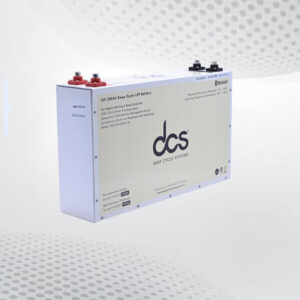Disposable Balaclava is a versatile piece of protective gear often overlooked in its usefulness. The balaclava has many applications, from providing protection in harsh weather conditions to aiding in infection control. In this blog post, we will delve into the various aspects of the balaclava, from its material composition to its environmental impact. Let’s explore the versatility of this essential piece of clothing.
Understanding the Basics of Balaclavas
Balaclavas are a fundamental piece of protective wear, enveloping the head, face, and neck whilst offering a small opening for the eyes and occasionally the mouth. Primarily known for their utility in colder climates, they play a crucial role in safeguarding against frostbite, windburn, and other cold-induced conditions. Balaclavas, fashioned from light, pliable materials, extend a disposable, hygienic solution for single uses.
Diverse settings
This variant stands apart for its ease of use in diverse settings, ranging from industrial to recreational activities, highlighting its broad applicability beyond cold-weather gear. The design of these balaclavas caters to a blend of functionality and comfort, ensuring that users can enjoy optimal protection without the inconvenience of cumbersome wear.
Hygiene
Moreover, the disposable nature underscores an emphasis on hygiene, particularly in environments with high contamination risks, such as medical or culinary fields. By integrating these disposable versions into routine practices, individuals and organisations can significantly mitigate exposure to environmental elements and health-related hazards, underscoring the indispensable value of understanding balaclava basics.
The Versatile Applications of Balaclavas
Beyond their renowned use for warmth in cold climates, Balaclavas find utility across a spectrum of professional settings. In the healthcare industry, these coverings are indispensable for reducing the transmission of airborne pathogens, safeguarding both patients and practitioners.
Prevent contamination
Similarly, in food production and service, balaclavas act as critical barriers against contamination, ensuring that hygiene standards are upheld to prevent the spread of foodborne illnesses. Moreover, the construction sector benefits from using balaclavas to protect against inhaling dust and other particulates that pose significant health risks over time.
Recreational pursuits
In recreational pursuits, especially in outdoor sports such as skiing, hiking, and cycling, balaclavas protect athletes and enthusiasts against the elements, enhancing comfort and performance. These varied applications underscore the balaclava’s adaptability and essential role in maintaining safety and hygiene in diverse environments, far beyond its traditional association with cold weather protection.
Material Matters: What Are Balaclavas Made Of?
The constituent materials of balaclavas are central to their functionality and user experience. These protective coverings are primarily crafted from non-woven polypropylene, combining lightweight properties with effective barriers against particulates and moisture. Such materials are favoured for their breathability, ensuring that air circulation is maintained to avoid discomfort during extended wear whilst the user is shielded from external elements or contaminants.
Another aspect of material composition is the move towards sustainability. In response to growing environmental awareness, manufacturers are exploring and incorporating biodegradable materials into the production of balaclavas. These eco-friendly alternatives are designed to mitigate the ecological footprint of single-use products by ensuring that, after disposal, they break down more easily and do not persist in the environment as long-term pollutants.
This shift towards materials that are not only functional but also environmentally responsible reflects a broader trend in the production of disposable personal protective equipment (PPE). By adopting materials that protect without compromising on environmental values, the industry adapts to consumer demand for products that align with a more sustainable ethos. As the market evolves, it is expected that these innovations in material science will continue to enhance the performance and ecological compatibility of balaclavas.
Key Features to Look for in High-Quality Balaclavas
Identifying the key attributes of high-quality balaclavas can significantly enhance user satisfaction and protection. Firstly, the fit is paramount; a well-designed balaclava should conform closely to the head and face contours without causing discomfort. This ensures maximum coverage and minimises exposure to external elements or contaminants. Elastic closures are critical, offering adjustability to accommodate different head sizes and shapes, providing the balaclava remains securely in place during movement.
Breathability is another essential characteristic, as it prevents the accumulation of moisture inside the balaclava, maintaining comfort over prolonged periods of use. Materials that allow adequate airflow without compromising the barrier against particulates are ideal. Moreover, for individuals wearing glasses or protective eyewear, opting for balaclavas with anti-fog properties is beneficial. This feature helps to maintain clear vision, which is especially important in environments where precision and safety are paramount.
Despite the disposable nature of these balaclavas, durability cannot be overlooked. Even though designed for single use, they should withstand the rigours of the intended application without tearing or degrading prematurely. Quality balaclavas balance the need for effective protection with the practicalities of disposable PPE, ensuring that users are not only shielded but also comfortable and unencumbered in their activities.
How to Properly Wear and Dispose of a Balaclava?
Ensuring the correct usage and disposal of a balaclava is integral to maximising its benefits while adhering to health and safety protocols. To begin the wearing process, individuals must commence with sanitised hands to preclude the inadvertent transfer of contaminants onto the balaclava. Carefully unfold the balaclava and align it so that the eye openings correspond correctly with your line of sight. Gently stretch it over your head, ensuring it snugly covers your head, face, and neck, leaving no unnecessary skin.
During the removal process, it’s crucial to exercise caution to avoid contact with the balaclava’s outer surface, as it may have been exposed to harmful particles or contaminants. Grasp the balaclava from the inside near the back of your head, gently pulling it away from your face and over your head. This technique helps to minimise the risk of self-contamination or spreading germs to surrounding areas.
Once removed, the balaclava should be immediately disposed of in a proper waste receptacle to contain potential contaminants, ideally one that is closed or can be closed. It is essential not to reuse a balaclava under any circumstances, as this negates its purpose of providing a hygienic, single-use barrier against environmental and biological contaminants. Adhering to these guidelines ensures that the balaclava serves its intended protective role effectively.
The Role of Balaclavas in Infection Control
In infection control, balaclavas offer a crucial barrier against microbial transmission, particularly in medical and laboratory environments where sterility is paramount. These protective garments are designed to cover most of the face and neck, significantly reducing the possibility of inhaling airborne pathogens or coming into direct contact with the skin. In scenarios where maintaining a sterile field is essential, such as in operating theatres or during certain clinical procedures, the balaclava acts as a first line of defence for the healthcare professional and the patient against potential infection risks.
Its single-use nature ensures that each balaclava is free from contaminants at the point of use, eliminating the risk of cross-contamination that can occur with reusable items. Furthermore, the ease of use and disposal of these balaclavas streamline infection control protocols, allowing healthcare workers to focus on patient care without compromising on safety. By integrating balaclavas into infection control strategies, healthcare facilities can enhance their protective measures, thereby contributing to a safer environment for both staff and patients.
Biodegradable and Eco-friendly Disposable Balaclavas
The burgeoning use of disposable personal protective equipment (PPE) has precipitated a discerning examination of its environmental footprint, catalysing the shift towards more sustainable practices within the industry. Recognising the criticality of this transition, manufacturers are increasingly pivoting towards producing biodegradable and eco-friendly Disposable Balaclavas. These innovations utilise materials derived from renewable resources that can break down naturally, significantly diminishing their persistence in landfill sites and their contribution to pollution.
Adopting such eco-conscious options reflects a commitment to environmental stewardship and aligns with growing consumer demand for products harmonising with ecological principles. Deploying biodegradable balaclavas in settings requiring single-use PPE showcases a proactive approach to reconciling hygiene and protection with the imperative of reducing environmental harm.
Ongoing advancements in material technology further enrich the dialogue around these eco-friendly alternatives. These enable the creation of balaclavas that maintain the requisite standards for protection and comfort while offering a more favourable environmental profile. Through these endeavours, the industry aims to foster a more sustainable future, marrying the critical need for personal protection with the collective responsibility towards our planet.
Cost Analysis: Balancing Quality with Affordability
The interplay between quality and cost efficiency is pivotal in procuring balaclavas. Premium balaclavas, boasting enhanced durability and better protective features, often have a higher price tag. This upfront cost, however, must be juxtaposed against the longevity and efficacy they offer, potentially rendering them a more cost-effective solution over time. Conversely, budget-friendly alternatives may seem economically attractive initially but could lead to increased expenditure due to the need for frequent replacements.
An astute cost analysis entails scrutinising the specific requirements of the balaclava’s intended application. Investing in higher-quality, albeit more expensive, balaclavas could prove prudent for environments demanding rigorous protection and hygiene, such as medical settings or high-contamination industrial sites. On the other hand, for less critical applications, cost-saving alternatives may suffice without significantly compromising safety or effectiveness.
Conclusion
The multifaceted utility of disposable balaclavas underscores their importance across a spectrum of sectors, affirming their status as more than mere weather protection garments. Exploring their varied applications, from enhancing public health measures in medical environments to securing hygiene in food service areas and facilitating safety in construction sites, highlights their indispensable role. Equally, the discussion on material innovation, focusing on the transition towards sustainable and biodegradable options, reflects a conscientious shift within the industry towards mitigating environmental impact.
FAQ’s
Can disposable balaclavas be reused if they appear clean after use?
A: No, disposable balaclavas are designed for single use to ensure the highest level of hygiene and protection. Reusing them, even if they appear clean, could compromise their effectiveness and increase the risk of contamination.
Are there eco-friendly options available for balaclavas?
A: In response to environmental concerns, manufacturers have begun producing biodegradable and eco-friendly balaclavas. These are made from materials that can break down naturally, helping to reduce their environmental impact.
How do I choose the right balaclava for my needs?
A: Consider the specific requirements of your activity or workplace. Opt for premium-quality balaclavas for environments that demand high levels of hygiene or protection. For less critical applications, more cost-effective options may suffice. Always balance quality with affordability.
What should I do if the balaclava doesn’t fit properly?
A: A well-fitting balaclava is crucial for optimal protection. If a balaclava doesn’t fit as expected, it’s advisable to try a different brand or model with adjustable features to ensure a snug and comfortable fit.
| Related Business Listings |
| Contact Directory |
| Local Business Profiles |




